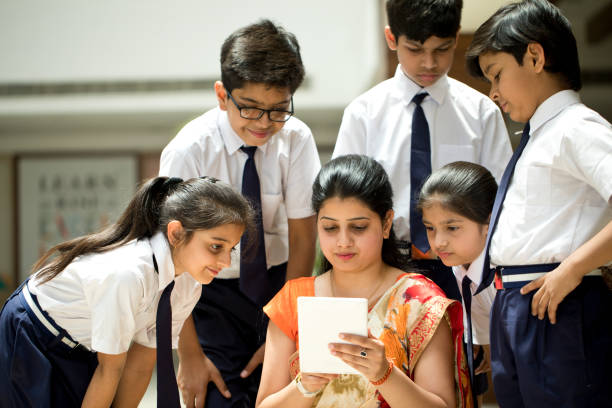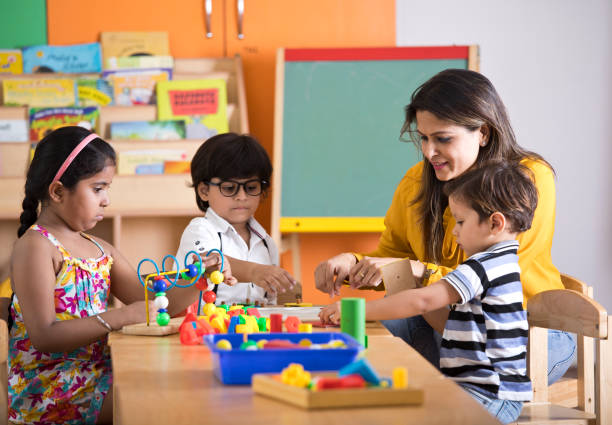Introduction
A young student, Priya, struggles to solve a puzzle problem in her class because she just follows the instructions without thinking deeply about the task. After a few days, she faces various challenges when attempting to solve a problem. Then, she starts to ask questions, examine the issues, and solve critical problems with a deep understanding. Priya’s experience shows the value of teaching young students about the development of critical thinking.
Critical thinking is a skill that is important for the growth of young minds. It helps students use a clear and logical approach while making decisions and solving issues. The Godavari Public School helps students with critical thinking skills that will shape their futures and prepare them for both the academic and real-world issues they will encounter in the future.
In this blog, we explore the various methods that help young students develop their critical thinking skills and contribute to their growth in everyday life.
Here are five methods that help to develop critical thinking skills in young minds.
Table of Contents
1. Encourage Curiosity and Questioning
The spark that lights the fire of critical thinking is curiosity. It promotes a natural desire in children to learn more, consider a variety of perspectives, and encourages students to go beyond learning, which helps them to develop critical thinking.
Here are some creative and engaging ways to encourage curiosity and questioning:
1. Open Discussions
2. Exploration-Based Learning
3. Fostering Curiosity
4. Provide a Learning Environment.
By nurturing curiosity, students build confidence and trust in their abilities, which promotes their growth into independent learners who have the freedom to experiment, think creatively, and tackle issues from several perspectives. It allows students to be creative thinkers who can handle challenging situations in the real world.

2. Problem-Solving Activities
Problem-solving helps students apply their knowledge in practical settings, which is an essential part of critical thinking. It also helps them think outside the box in this challenging world because this process not only strengthens their critical thinking but also builds their self-confidence.
Here are different problem-solving activities that encourage young students:
1. Real-World Case Studies
2. Math Puzzles and Logical Challenges
3. Group Problem-Solving Tasks
4. Analyzing Historical Events.
Doing these types of activities helps students develop their critical thinking. Ultimately, the problem-solving exercises help them excel in the future, which will benefit them in both academics and the real world.
3. Collaborative Learning
Collaborative learning encourages students to think from multiple perspectives. When students collaborate and have meaningful conversations, their critical thinking skills improve significantly. Additionally, young students will understand the proper learning concepts and improve their analytical thinking.
Here are some points that encourage collaborative learning:
1. Group discussions and debates
2. Team projects
3. Role-play activities
4. Peer feedback sessions.
The development of critical thinking abilities in young children is significantly helped by collaborative learning. Through group activities and engaging ideas, young students build their critical thinking skills, which helps them act more thoughtfully.

4. Enhancing Critical Thinking with Technology
In today’s digital world, technology builds important tools for learning and gives students unlimited access to knowledge. By using new digital tools, students learn many more skills that help them in their real lives.
Here are different points that encourage young students to use new technology to enhance their critical thinking:
1. Research-Based Learning
2. Digital Storytelling
3. Learning Through Games
4. Building Logical Reasoning.
By integrating technology into learning, students develop their critical thinking more efficiently. With this method, students can enjoyably enhance their critical thinking abilities.
5. Fostering a Growth Mindset
Students who have a growth mindset are better able to view challenges as opportunities because it encourages them to evaluate, consider, and modify their learning strategies. When young students understand that skills can be developed through practice, they work hard for that.
Here are some points showing how we can develop a growth mindset:
1. Encourage learning opportunities
2. Celebrate efforts
3. Give feedback
4. Promote self-assessment.
Encourage youngsters to ask questions, think critically, and tackle every issue with a positive and determined mindset. This mindset not only benefits students academically but also prepares them for obstacles in real life where determination and flexibility are important.
Conclusion
Developing critical thinking skills in young students is important for their future growth as well as their personal development.
By nurturing curiosity and encouraging a growth mindset, we provide young students with a learning environment. These abilities not only improve their academic achievement but also empower them to grow confidently, which helps them tackle challenges in the real world.
The early development of critical thinking skills helps young students explore new ideas, allowing them to contribute meaningfully to society and make thoughtful decisions throughout their lives.
FAQ’S
How can we develop critical thinking in young children?
Encourage young children to think critically by developing their curiosity, problem-solving skills, teamwork, and analytical abilities, which help them think independently.
What is the aim of critical thinking in education?
The goal of critical thinking in education is to support students’ independence of thought, information analysis, decision-making, and problem-solving skills, and to understand various perspectives, allowing them to face challenges in real life.
What is an example of critical thinking for students?
Analyzing information, research-based learning, group discussions and debates, and math puzzles and logical challenges.
What are the three characteristics of a good critical thinker?
The three characteristics of a good critical thinker are: curiosity, open-mindedness, and analytical thinking.



